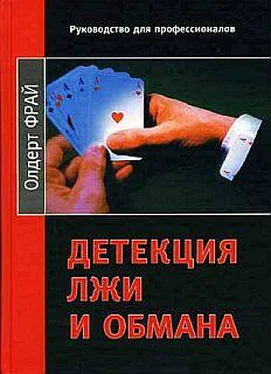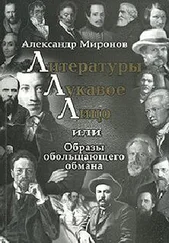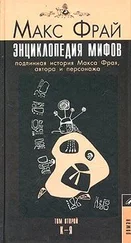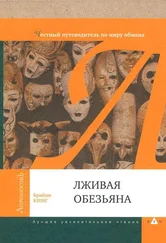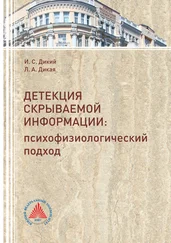Horowitz, S.W. (1998). Reliability of criteria-based content analysis of child witness statements: response to Tully. Legal and Criminological Psychology, 3, 189–193.
Horowitz, !S. W., Kircher, J. C, Honts, С R. & Raskin, В. С. (1991). The role of comparison questions in physiological detection of deception. Psychophysiology, 34,108–115.
Horowitz, S. W., Lamb, M. E., Esplin, P. W., Boychuk, Т. В., Krispin, O. & Reiter-Lavery, L. (1991). Reliability of criteria-based content analysis of child witness statements. Legal and Criminological Psychology, 2, 11–21.
Horowitz, S, W., Lamb, M. E., Esplin, P. W., Boychuk, Т. В., Reiter-Lavery, L. & Krispin, O. (1996). Establishing ground truth in studies of child sexual abuse. Expert Evidence: The International Digest of Human Behaviour Science and Law, 4,42–52.
Hunter, J. E., Gerbing, B. W. & Boster, F.J. (1982). Machiavellian beliefs and personality: construct invalidity of the Machiavellianism dimension. Journal of Personality and Social Psychology, 43, 12931305.
Hurd, K. & Noller, P. (1988). Becoding deception: a look at the process. Journal of Nonverbal Behavior, 12, 211–233.
lacono, W. G. & Lykken, В. T. (1991). The validity of the lie detector: two surveys of scientific opinion. Journal of Applied Psychology, 82, 426–433.
Ickes, W. (1984). Compositions in black and white: determinants of interaction in interracial dyads. Journal of Personality and Social Psychology, 41, 330–341.
Inbau, E E., Reid,J. E., & Buckley, J. P. (1986). Criminal interrogation and confessions. Baltimore, MB: Williams & Wilkins.
Jackson, J. (1996). Truth or fantasy: the ability of barristers and laypersons to detect deception in children's testimony. Paper presented at the AP-LS Biennial Conference, Hilton Head Island, South Carolina, USA, March 1996.
Jones, В. P. H. & Krugman, R. (1986). Can a three-year-old child bear witness to her sexual assault and attempted murder? Child Abuse and Neglect, 10, 253–258.
Jones, B. P. H. & McGraw, J. M. (1981). Reliable and fictitious accounts of sexual abuse to children. Journal of Interpersonal Violence, 2, 21–45.
Jones, B. P. H. & McQuinston, M. (1989). Interviewing the sexually abused child-London: Gaskell. Johnson, M. K. (1988). Reality monitoring: an experimental phenomenological approach. Journal of Experimental Psychology: General, 111, 390–394.
Johnson, M. & Foley, M. A. (1984). Bifferentiating fact from fantasy: the reliability of children's memory. Journal of Social Issues, 40, 33–50.
Johnson, M. K. & Raye, C. L. (1981). Reality monitoring. Psychological Review, 88, 61–85.
Johnson, M.K. & Raye, C.L. (1998). False memories and confabulation. Trends in Cognitive Sciences, 2,131–145.
Johnson, M. M. & Rosenfeld, P.J. (1991). Oddball-evdked рЗОО-based method of deception detection in the laboratory. II. Utilization of non-selective activation of relevant knowledge. International Journal of Psychophysiology, 12, 289–306.
Johnson, M. K. & Suengas, A. G. (1989). Reality monitoring judgments of other people's memories. Bulletin of the Psychonomic Society, 27, 101–110.
Johnson, M. K., Foley, M. A., Suengas, A. G. & Raye, C. L. (1988). Phenomenal characteristics of memories for perceived and imagined autobiographical events. Journal of Experimental Psychology: General, 111, 311–316.
Johnson, M. K., Hashtroudi, S. & Lindsay, B. S. (1993). Source monitoring. Psychological Bulletin, 114,3-29.
Kalbfleisch, P. (1992). Beceit, distrust and the social milieu: application of deception research in a troubled world.Journal of Applied Communication Research, 20,308334.
Kalbfleisch, P.J. (1994). The language of detecting deceit. Journal of Language and Social Psychology, 13, 469–496.
Kalma, A., Witte, M. & Zaalberg, R. (1996). Authenticity: operationalization, manipulation, and behavioural components: an explanation. Medium Psychologic, 5,49–65.
Kashy, B. A. & BePaulo, В. M. (1996). Who lies? Journal of Personality and Social Psychology,!0, 1031–1051.
Kassin, S. M. (1991). The psychology of confession evidence. American Psychologist, 52,221–233.
Kircher, J. C. & Raskin, В. С. (1988). Human versus computerized evaluations of polygraph data in a laboratory setting. Journal of Applied Psychology, 13, 291–302.
Kircher, J. C., Horowitz, S. W. & Raskin, В. C. (1988). Meta-analysis of mock crime studies of the control question polygraph technique. Law and Human Behavior, 12, 19–90.
Kleinke, C. L. (1986). Gaze and eye contact: a research review. Psychological Bulletin, 100,18-100.
Kleinmuntz, B. & Szucko, J. J. (1982). On the fallibility of lie detection. Law and Society Review, 11, 85104.
Kleinmuntz, B. & Szucko, J. J. (1984). Lie detection in ancient and modern times: a call for contemporary scientific study. American Psychologist, 39, 166–116.
Kline, P. (1993). The handbook of psychological testing. New York: Routledge.
Knapp, M. L., Hart, R. P. & Bennis, H. S. (1914). An exploration of deception as a communication construct. Human Communication Research, 1, 15–29.
Kdinken, G. (1985). Speech and deception of eyewitnesses: an information processing approach. In F. L. Benmark (Ed.), The psychology of women. Amsterdam: Elsevier Science Publishers, 111–139.
Kdinken, G. (1981). Training police officers to detect deceptive eyewitness statements. Boes it work? Social Behaviour, 2, 1-11.
Kdinken, G. (1989). Behavioral correlates of statement credibility: theories, paradigms and results. In H. Wegener, F. Losel & J. Haisch (Eds), Criminal behavior and the justice system: psychological perspectives. New York-Springer-Verlag, 211–289.
Kdinken, G. (1990). Glaubwiirdigkeit: Untersuchungen zu einem psycholo-gischen konstrukt. Munich: Psychologie Verlags Union.
Kdinken, G. (1996). Social psychology and the law. In G. R. Semin & K. Fiedler (Eds), Applied Social Psychology. London: Sage Publications, 251–282.
Kdinken, G. & Wegener, H. (1982). Zur Glaubwiirdigkeit von Zeugenaussagen: Experimentelle Uberprufungausgewahlter Glaubwiirdigkeitskriterien (Credibility of witness statements: experimental examination of selected reality criteria). Zeitschrift fur Experimentelle und Angewandte Psychologie 29, 92-111.
Kdinken, G., Milne, R., Memon, A. & Bull, R. (in press). The cognitive interview: a metaanalysis. Psychology, Crime, and Law.
Kdinken, G., Schimossek, E., Aschermann, E. & Hofer, E. (1995). The cognitive interview and the assessment of the credibility of adults' statements. Journal of Applied Psychology, 80, 611–684.
Читать дальше
